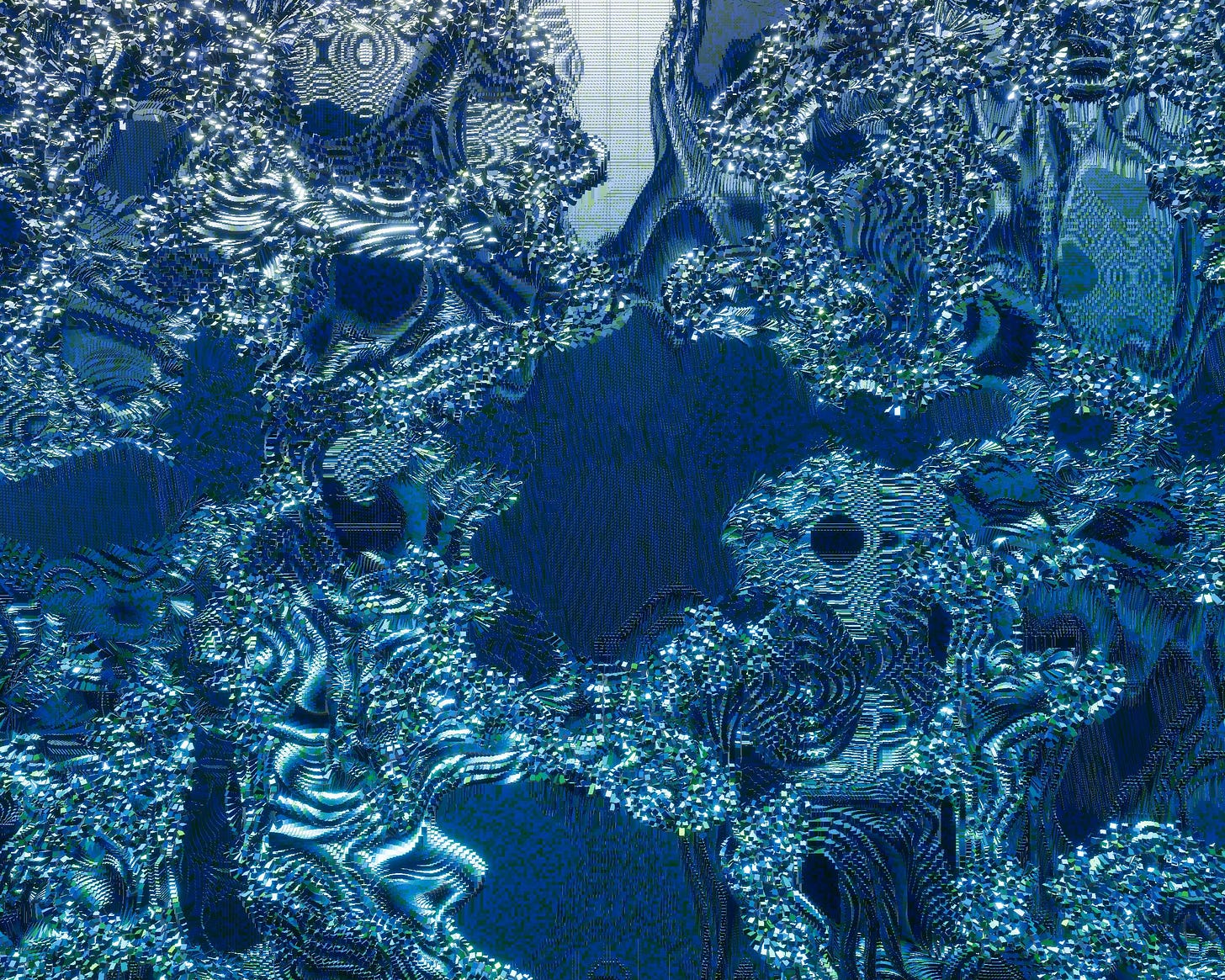The edge of randomness
Exploring the critical point between order and chaos
I want to tell you how I landed on the name for my newsletter.
The story starts with a visual effects (VFX) tutorial for Unity I found on Youtube. The tutorial is short and simple: generate hundreds (or thousands) of small reflective rectangles in a tight grid, and then make them spin. To make things interesting, you’ll want the rectangles to spin in different directions. To do that, you can add a careful amount of randomness to the mix.
Computer generated randomness is never truly random - that’s by definition. A computer computes, and by definition randomness is non-computable (where did that number come from? you can’t know!) People go through a lot of trouble to come up with algorithms that generate random-enough numbers, and Perlin noise is one of the most popular and influential in the world of graphics.
Perlin noise is ultimately a function that uses a grid over your screen to give you a texture of random numbers. If the effect is weak, nearby points will have similar output values, revealing order. But turn it up high enough and the effect will be strong enough to “decouple” the result from the initial position, turning into random noise.
You can observe this trippy descent into randomness by letting the amplitude of the Perlin noise increase slowly over time, like I did in this video: (apologies for blurriness, this is effectively a super inefficient shader made out of thousands of rectangles, but it looks cool so I stuck with it)
This transition from order to noise is something of a phase transition.
In physics, a phase transition is the stark transition between two different states of matter. An obvious example is boiling water to become a gas - if you increase temperature of liquid water to 100 degrees Celsius, it transitions to a gas. That transition point is called the critical point.
The concept of phase transitions goes far beyond just solids, liquids, and gases. Another popular example is in magnets, as modeled by the famous Ising Model. Magnetism results from the ways the atoms in a material are oriented (or more precisely, how the atoms’ spins are oriented). If the atoms’ spins are overwhelmingly oriented in the same direction, they will create a net magnetic field over the material. If you say, heat the magnet so much that the atoms start rapidly vibrating, the spin directions will randomize and the magnetic force will go away. That happens at a critical point called the Curie temperature.
Phase transitions can even take place on the scale of the entire universe. In fact, we know that our universe has undergone multiple phase transitions in it’s early history, when the laws of physics instantly changed. You can learn about that here.
Sometimes, like in the case of water boiling, the phase transition is discontinuous. Up until 100°C, water is a liquid, and at 100°C it changes directly into a gas. There’s no in between liquid-gas phase that water remains at.
In the case of my VFX video, we have something like a continuous phase transition. There’s a range of values for which the result is in some intermediary state between ordered and random. It turns out that lots of physical systems have continuous phase transitions, including the magnets I described earlier. That means that the system can persist in this intermediary phase, not quite one state of matter, and not quite the other.
When I started playing around with this “edge of randomness” in VFX, I couldn’t shake the feeling that the critical point is where interesting things live. That’s where we can make out patterns that surprise us. It’s that sweet spot between the boring and predictable, and complete nonsense.
So what else lives at the critical point?
It occurred to me that this careful mix of order and randomness may be exactly the zone in which life thrives. The thought was inspired earlier this Summer while I was teaching a class on quantum mechanics to a group of ambitious high schoolers. Quantum mechanics is the one place in fundamental physics that seems to have some randomness built in. Maybe this quantum randomness is a prerequisite for life somehow, and without it we would have a lifeless deterministic universe. However, too much randomness and coherent things can’t happen, so there must be a sweet spot.
The whole thought was pretty vague and poorly developed, which is why I was excited to find out that a much more highly developed theory exists which suggests that our brains may actually exist at a critical point! But more on that next time…
So that’s about the path I went down just before starting this Substack, and it’s why the first name that came to mind was one that felt like it reached through all my interests: the critical point. Maybe it also captures something about the nature of this newsletter, something between science writing and notes-app musings.
And now, here is a little series I will call “Explorations On the Edge of Randomness”, all based off the same technique from that earlier tutorial. Making these felt like stepping into a world where every turn can land you somewhere unexpected. I hope you feel the same way while browsing them.




